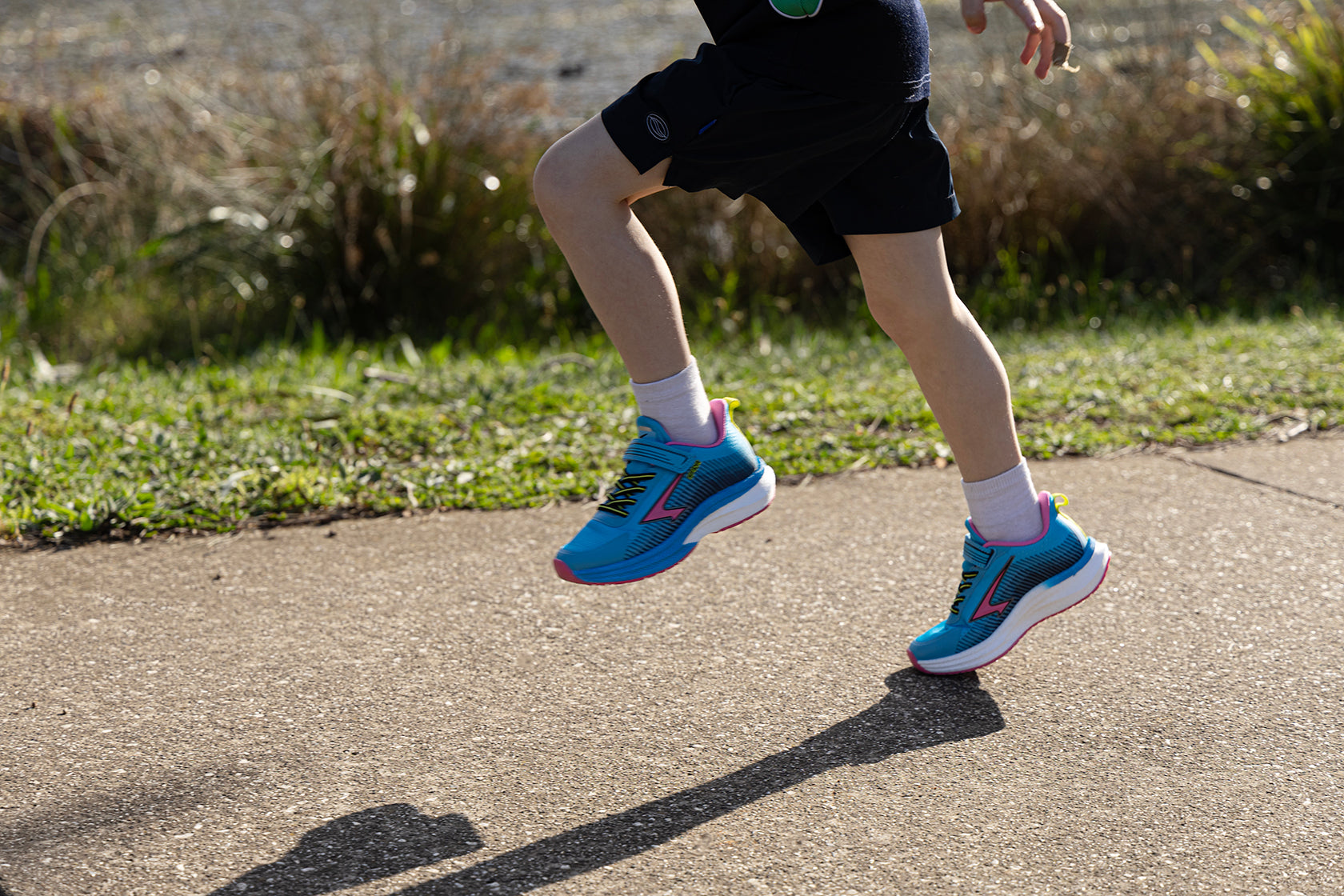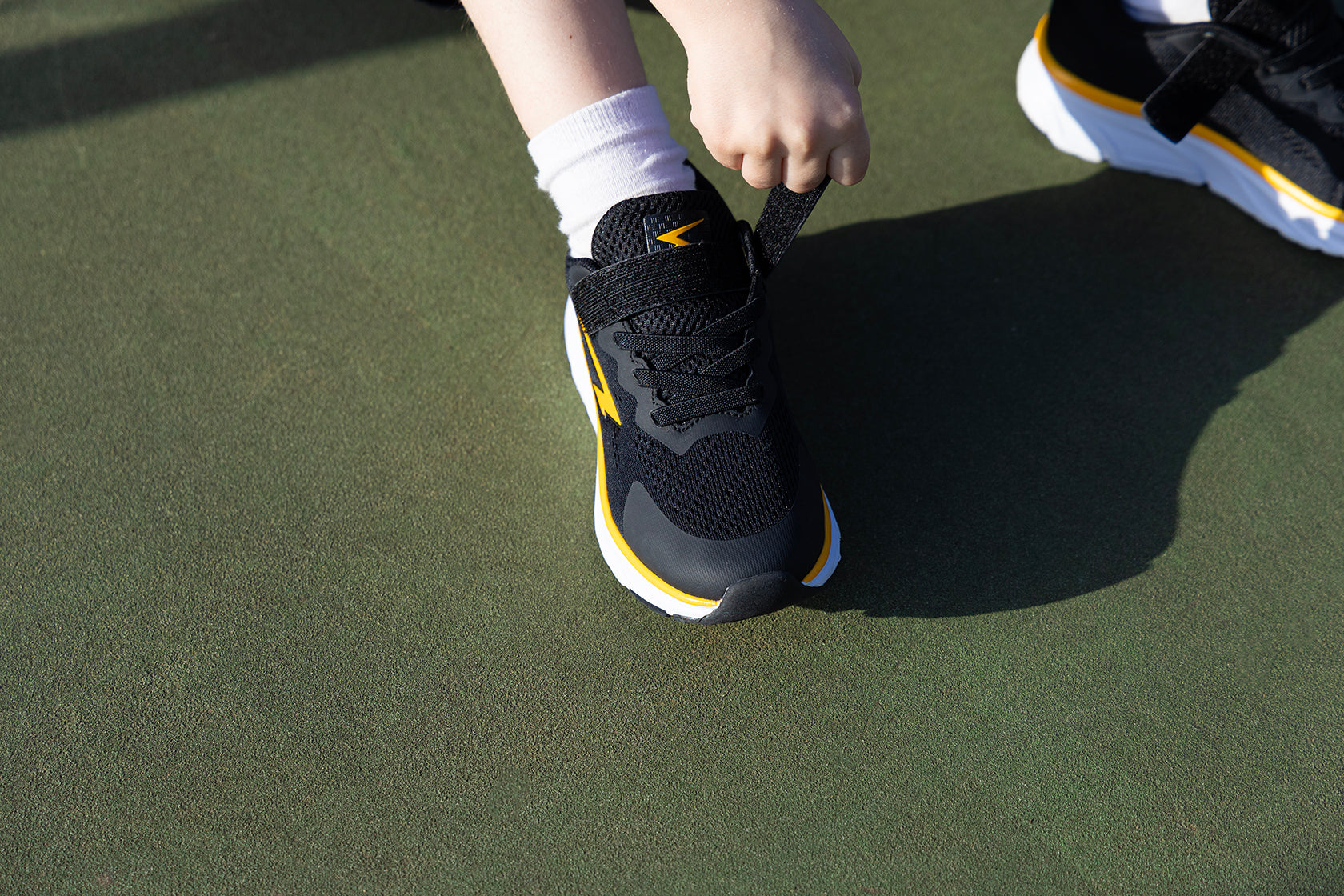They Grow Fast. We Get it.
1. Measure Feet in the Afternoon
Feet swell during the day, so measure in the afternoon for the most accurate size — no surprise blisters later!
2. Use a Proper Foot Measuring Tool
Grab a Brannock device or printable size chart to measure both length and width. Check both feet — one is usually slightly bigger!
3. Leave a Thumb’s Width of Wiggle Room
A thumb’s width (around 1 cm) between the toe and shoe front gives enough space for growth — without turning every hallway into a tripping hazard.
4. Don’t Rely on “They’ll Grow Into It”
Too-big shoes can cause blisters, bad walking habits, and frustration. Stick with a size that fits well now.
5. Check the Heel Fit
Shoes should stay snug at the heel with no slipping. A secure fit supports better balance and reduces rubbing.
6. Test With Real Socks
Have them try shoes on with the socks they’ll actually wear — especially for school or sport. It makes a big difference in fit!
7. Choose a Style With Heel Cushioning
Heel cushioning helps absorb impact (especially for active kids), protecting their feet and joints from unnecessary strain.
8. Look for a Comfortable Innersole
A well-cushioned, supportive innersole keeps little feet comfy all day and encourages healthy movement and posture.
9. The Right Shoes Help Posture & Joints
Good footwear supports more than feet — it improves posture, protects growing joints, and reduces the risk of injury during sport or play.
10. Flex and Feel
Shoes should bend at the ball of the foot — not in the middle — and offer support through the arch. If it’s too stiff or too soft, keep looking.
11. Do a Walk (or Zoom) Test
Let your child walk, run, hop, and spin. Watch for heel slippage, toe cramping, or weird walking. If anything feels off — it probably is.
12. Recheck Every Few Months
Kids' feet can grow a full size in 3–6 months! Set reminders to check fit regularly, especially during growth spurts.




